Post Syndicated from James Simon original https://aws.amazon.com/blogs/architecture/software-defined-edge-architecture-for-connected-vehicles/
To remain competitive in a marketplace that increasingly views transportation as a service emphasizing customer experience, vehicle capabilities and mobility applications need to improve and increase value over time, much like the internet of things and smart phones have done.
Vehicle manufacturers and fleet operators are responding to this change by using data to inform and operate their businesses, and by adopting software-defined vehicle features and capabilities. In the broader transportation community, insurance providers are evolving to usage-based insurance, which offers rates that are based on a customer’s risk profile rather than a general population. Telematics service providers are expanding their offerings to fleet operators to include machine learning (ML)-driven capabilities like driver coaching, compliance, and predictive maintenance. Rental car providers are developing apps that provide a personalized in-vehicle experience.
All of these features rely on in-vehicle data collection and processing, evolving vehicles from simple data gathering sensors to fully smart devices. To meet these demands, you can adopt cloud native architectures that use microservices, containers, and declarative application programming interfaces (APIs). This blog post explores a system architecture AWS and Luxsoft have developed together in order to help our customers reduce friction and accelerate time to market for the development, deployment and operation of edge applications required to make vehicles into smart devices.
Software-defined edge
Software is becoming more critical to vehicle function. A modern car has approximately 70-100 Electronic Control Units (ECUs), which control most core functions in the engine, transmission, Heating, ventilation, and air conditioning (HVAC) Automatic Brake System (ABS), body, and airbag hardware components. With new features such as infotainment systems, autonomous driving (AD), and advanced driver assistance systems (ADAS), modern cars use approximately 100 million lines of code, and this is increasing rapidly. ECU and software complexity produce challenges with portability of applications, this could be due to variations of the hardware, or CAN and other network communication differences, without an abstraction layer, application software must be conformed to the operating environment.
One difficulty presented by this increasing complexity and the multitude of integration points and communication interfaces at the edge is that applications typically must be re-developed, customized or at least cross-compiled to fit each hardware platform, often requiring a lengthy integration development and testing cycle for each new device. As a result, edge applications executing ML and other data-driven workloads can produce a pace that is slower than consumer expectations.
The development pace for software-defined vehicles (SDVs) relies on reusing and redeploying software applications. Software reuse is a challenge when target hardware and processing environments aren’t designed in a common way. Therefore, an early step in developing SDVs is to address these challenges at the vehicle edge, that is to say, the externally connected vehicle devices.
System architecture
To help address the challenges of creating reusable software and applications for the vehicle edge, we worked with AWS Partner DXC Luxsoft to create an end-to-end system architecture. The architecture in Figure 1 uses software-defined mobility devices at the vehicle edge to connect to multiple hardware components.
Let’s explore this architecture step by step.
- Edge application Developers check in source code to a CI/CD system for build and test. Applications are built as containers and tested on Amazon EC2 Elastic Compute Cloud (Amazon EC2) instances with target same Amazon Machine Images (AMI).
- Edge application containers are stored in Amazon Elastic Container Registry (Amazon ECR).
- Containers are registered as AWS IoT Greengrass components for target devices.
- Deploy edge applications to multiple target types using AWS IoT Greengrass.
- Data is published back to AWS through AWS IoT Core basic telemetry or AWS IoT Fleetwise.
- AWS IoT Core routes data to connected vehicle databases and services for further processing. Alternatively, AWS IoT Fleetwise-collected data is routed through AWS IoT Fleetwise.
- The Fleet Management portal allows fleet managers to view results produced by applications and services and data collected by AWS IoT Fleetwise. This can include geolocation, vehicle health, Usage Based Insurance (UBI), or other driver scores.
- Mobile clients can be created to allow end users and consumers to view application and service results and scores for applications like UBI.
How it works
This technology stack abstracts the specific hardware used, presenting a common run environment that you can deploy to devices that are based on ARM processors with ARM Sytem Ready firmware, including Amazon EC2 Graviton instances.
This architecture uses the following:
- Device software stack with an ARM System Ready board support package
- Yocto custom Linux build with the SOAFEE EWAOL layer(s) and AWS IoT Greengrass
- Instance of the AWS IoT Fleetwise edge agent
- Application containers for pre and post processing of data collected by AWS IoT Fleetwise or other applications
We paired this stack with AWS IoT Greengrass V2 and a container-based version of AWS IoT Fleetwise edge agent that we been modified to publish to a local broker first to allow pre and post-processing. This also makes AWS IoT Fleetwise-collected data available to other application containers running on the device. The pre- and post-processing containers prepare messages and data for use by other edge applications or exchange with the cloud services and will be available with the architecture source code.
Benefits
Because this architecture is container-based and abstracts the hardware, deploying and updating applications becomes more efficient. Because Amazon EC2 Graviton instances are ARM-based, you can deploy specific AMIs and configurations that contain this architecture’s technology stack as part of a continuous integration and continuous deployment (CI/CD) pipeline. This means that you can develop new applications and services entirely in the cloud, test them in the cloud with bit equivalent binaries and containers, and then deploy them to hardware components. This can save weeks to months of development and verification through the use of automation. The use of ARM based systems cloud native development and testing strategies can be applied, reducing the need for hardware test equipment and bringing new revenue streams and customer experiences to market at a pace that matches the current demand.
Conclusion
With this architecture, you can develop and deliver new edge processing applications to one or more vehicle device platforms. You can also develop, test, and deploy purpose-built edge compute applications as containerized AWS IoT Greengrass V2 components, including applications like Usage Based Insurance, over the air update agents, and driver distraction.
With this architecture alone in place, value can quickly be added by developing AWS IoT Fleetwise data campaigns targeting specific data required to fulfill business value for consumers, operators or fleet managers, such as vehicle battery state of charge or health indicators.
You can add value to this architecture by developing AWS IoT Fleetwise data campaigns for specific data required to fulfill business value for consumers, operators, or fleet managers. Examples of this data include vehicle battery state of charge and health indicators.
If you’re interested in creating or contributing to a common architecture that can accelerate developing and deploying edge applications to multiple hardware components, contact Connected Vehicle Tech Strategy Lead James Simon or AWS Partner DXC Luxsoft for a working demonstration or to start a proof of concept.

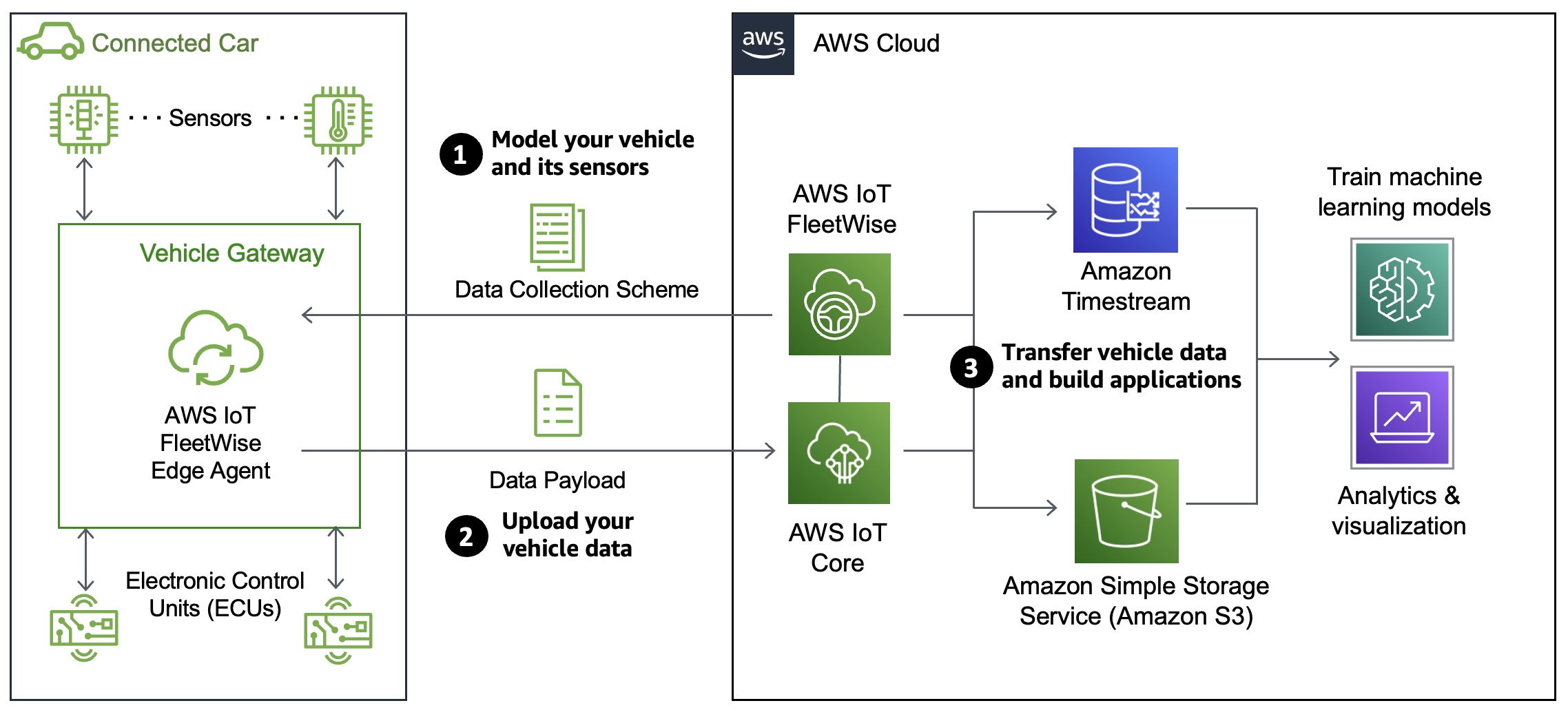


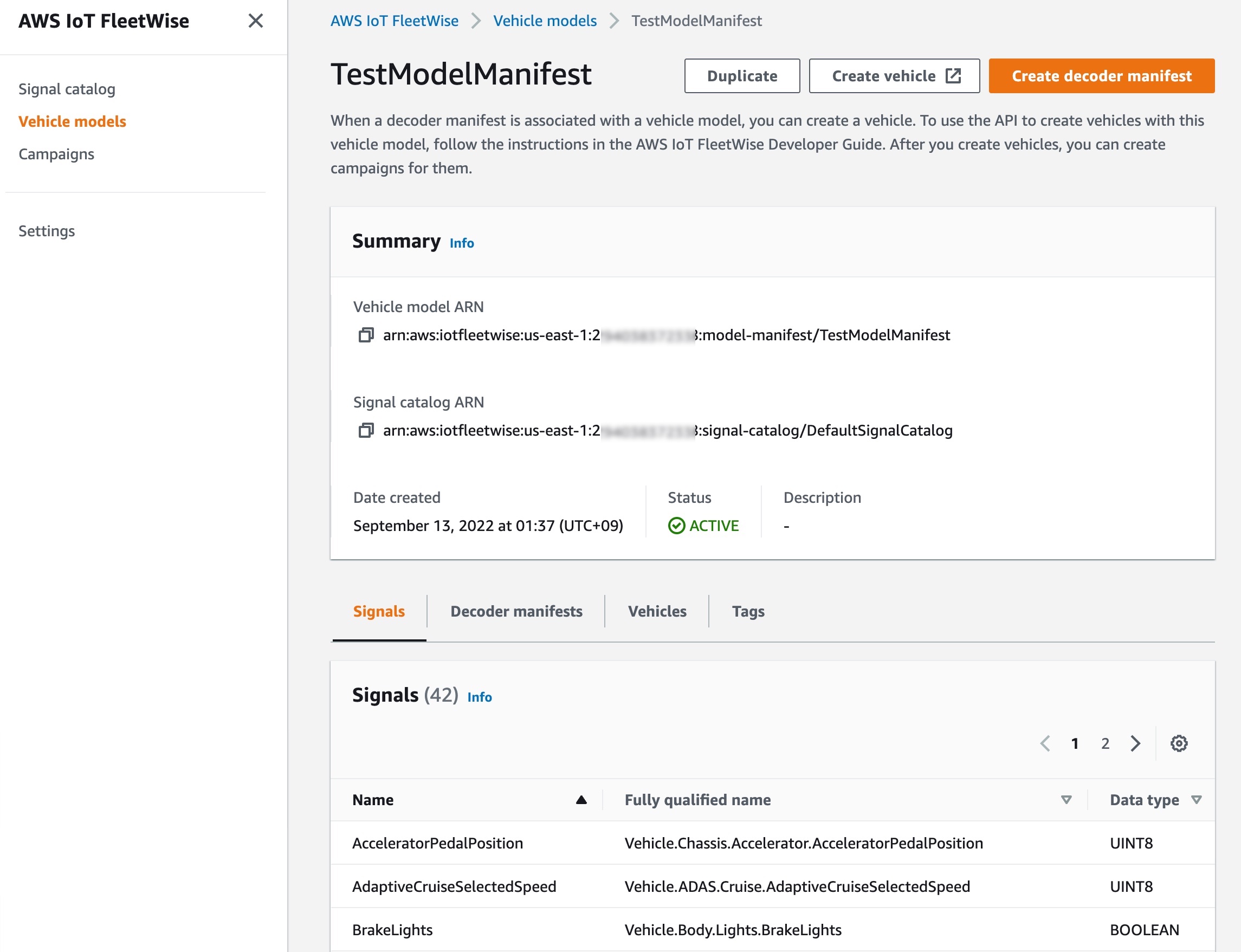
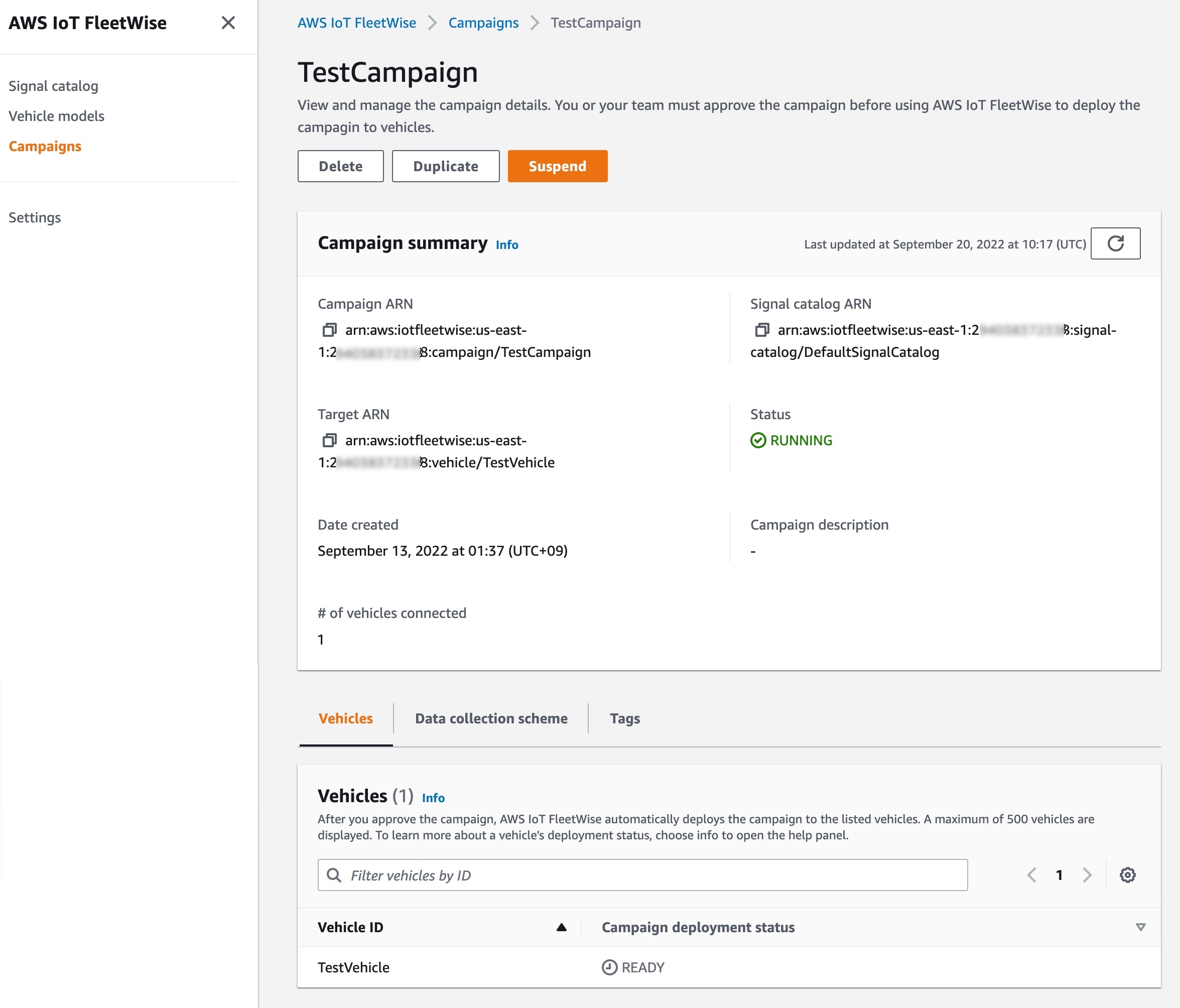
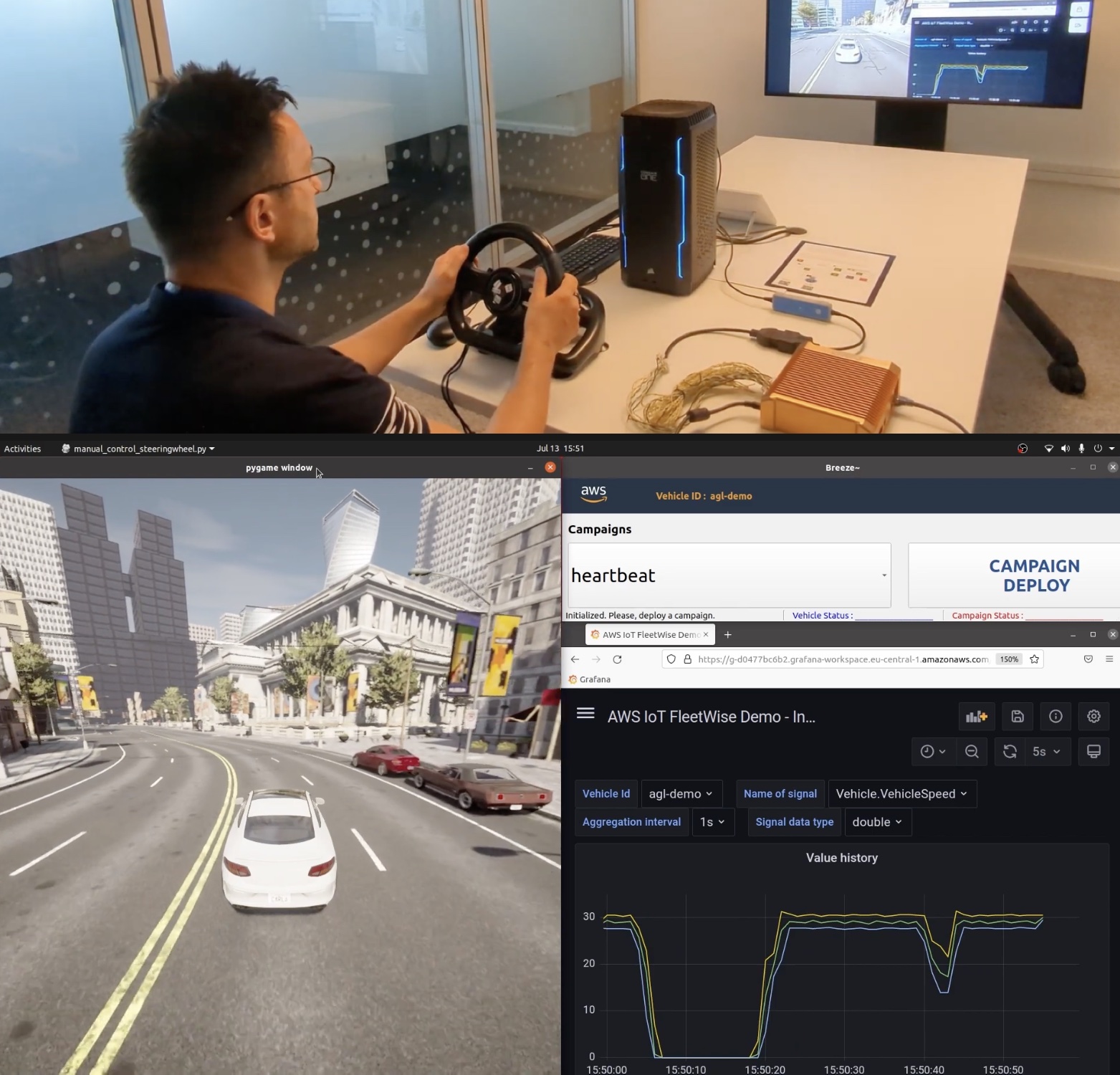
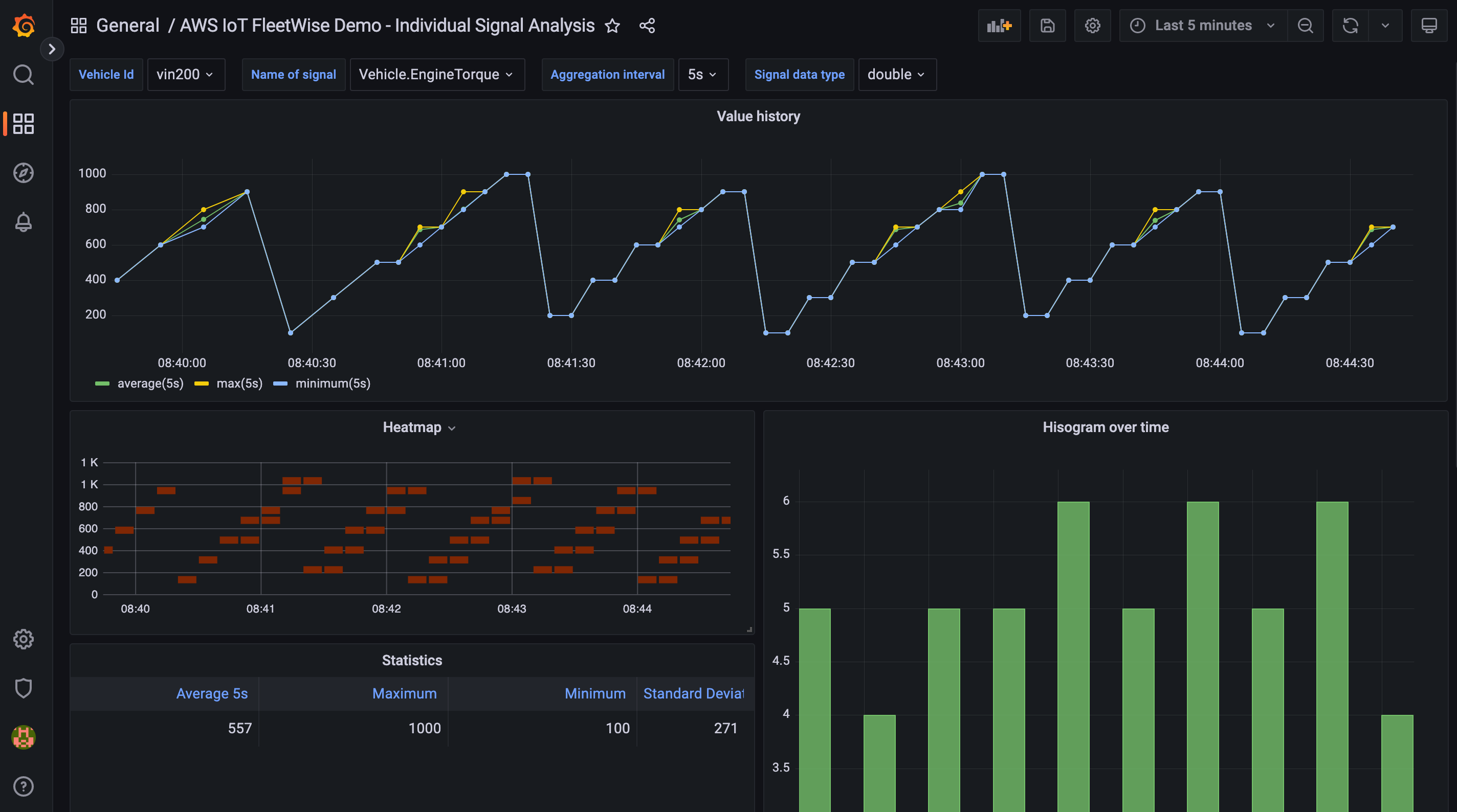
 For example,
For example, 

